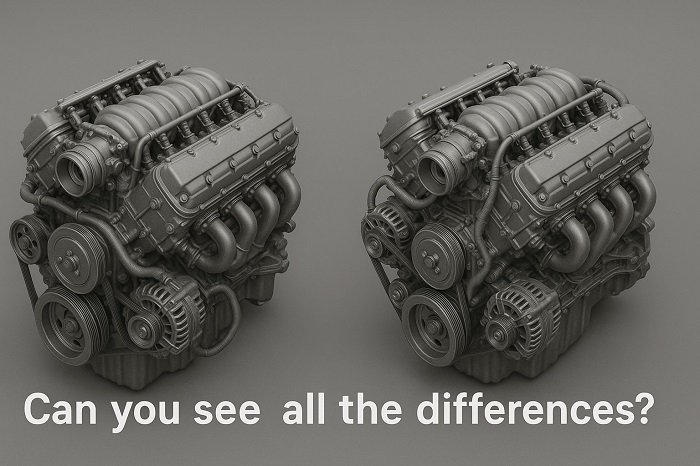Over the past decade, the demand for 3D geometry comparison tools, like our LEDAS Geometry Comparison (LGC), has grown significantly across industries such as aerospace, automotive, general manufacturing, AEC/BIM, and product design. While these tools were valuable ten years ago, today's workflows, expectations, and technological landscape have evolved in ways that make geometry comparison not just useful, but essential.
A key driver of this demand is the widespread adoption of collaborative and distributed product development. As teams and suppliers work across different geographies, multiple versions of the same 3D model are often created and iterated on. Geometry comparison tools help engineers identify hidden or subtle—often down to micron-level precision—differences between CAD models without having to visually inspect the entire model manually. This not only saves time but also prevents critical errors from being missed.

The work on Building Information Modeling (BIM) 3D models is even more distributed, with different teams collaborating on architecture and structure, as well as mechanical, electrical, and plumbing objects and networks. We know this from the projects we implemented and delivered to our customers on the basis of our proprietary software components, LGC and LCP—LEDAS Cloud Platform.
The complexity of 3D models has also increased. Modern engineering and design projects involve larger assemblies, more detailed surface features, and tighter tolerances. Geometry comparison tools are indispensable for validating revisions, identifying unintended modifications, and ensuring compliance with original design intent. This is particularly critical in certified industries like aerospace and medical devices.
The rise of digital twins, reverse engineering, and 3D scanning technologies has further increased the need for reliable comparison tools. Engineers now have to frequently compare scanned physical parts with their digital counterparts to detect wear, manufacturing deviations, or deformation. This has made 3D geometry comparison a core part of quality control workflows.
Additionally, the proliferation of different CAD formats and systems has led to an increase in the number of conversions between formats, which can introduce geometric inaccuracies. Comparison tools help validate data integrity throughout these conversions, ensuring that geometry remains unchanged or alerting users to discrepancies.
As 3D modeling and manufacturing become more sophisticated, the margin for error continues to shrink. 3D geometry comparison tools are no longer a luxury—they are a necessity for ensuring precision, efficiency, and confidence in digital design and production pipelines. The growing industry demand is reflected in the recent licensing of our LEDAS Geometry Comparison library by a major telecom industry player, confirming both its value and our vision for its expanding role in the future.